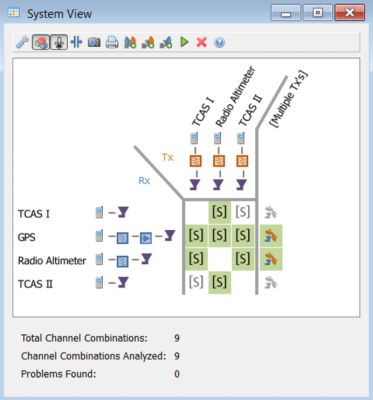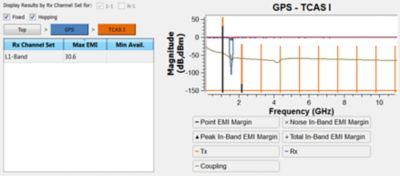-
-
Accédez au logiciel étudiant gratuit
Ansys donne les moyens à la prochaine génération d'ingénieurs
Les étudiants ont accès gratuitement à un logiciel de simulation de classe mondiale.
-
Connectez-vous avec Ansys maintenant !
Concevez votre avenir
Connectez-vous à Ansys pour découvrir comment la simulation peut alimenter votre prochaine percée.
Pays et régions
Espace client
Support
Communautés partenaires
Contacter le service commercial
Pour les États-Unis et le Canada
S'inscrire
Essais gratuits
Produits & Services
Apprendre
À propos d'Ansys
Back
Produits & Services
Back
Apprendre
Ansys donne les moyens à la prochaine génération d'ingénieurs
Les étudiants ont accès gratuitement à un logiciel de simulation de classe mondiale.
Back
À propos d'Ansys
Concevez votre avenir
Connectez-vous à Ansys pour découvrir comment la simulation peut alimenter votre prochaine percée.
Espace client
Support
Communautés partenaires
Contacter le service commercial
Pour les États-Unis et le Canada
S'inscrire
Essais gratuits
ANSYS BLOG
January 25, 2022
5G and Aircraft Safety: How Simulation Can Help to Ensure Passenger Safety
On Tuesday, January 18, telecommunications companies made available new radio access network (RAN) units operating in the coveted 5G mid-band spectrum (also known as C-Band). They had purchased the rights to this country-wide spectrum from the FCC in December 2020 at a combined cost of $69 billion to gain access to up to 280 MHz of combined bandwidth. This bandwidth provides faster upload and download speeds than current 4G LTE services at a frequency that exhibits much better range and obstacle blockage performance than the emerging 5G mm-wave bands.
The sale of this spectrum raised major issues within the FAA, the commercial airline industry, and the Department of Defense, who cited strong concerns over the potential danger of interference with the radar altimeter systems on their aircraft. Finally, on Tuesday, the FAA announced an immediate ruling that forbids pilots from using auto-landing (and other flight systems used at low altitudes) where the new 5G signals could interfere with radar altimeter systems. This ruling sparked an immediate reaction throughout the air travel industries and extended even to the securities markets.
As a result, major international airlines canceled flights to the U.S. In addition, several domestic airline routes were canceled or in danger of cancellation at 50 airports highlighted by the FAA as areas of concern. The consequences of this sudden FAA action were wide-ranging, causing global air travel difficulties, sending aircraft manufacturer stocks plummeting, and driving avionics manufacturers to begin testing and certifying their equipment against the new spectrum threat.
Thousands of aircraft across the world are now under scrutiny — from major commercial airliners to personal aircraft to helicopters. Past and current generations of radar altimeters were never designed with the expectation that strong adjacent signals would need to be anticipated and rejected. Radar altimeter developers and the aircraft manufacturers who use their equipment must now check or test their designs to assess how they will perform when flying near a 5G tower during takeoff or landing. Note that by Wednesday, January 20, the FAA announced approvals for an “estimated 78 percent of the U.S. commercial fleet to perform low-visibility landings at airports where wireless companies deployed C-band.” This list covers most wide-body aircraft, as well as some regional jets.
All of this might have been avoided with the use of electromagnetic simulation software.
The Path to the Crisis
How did we get here? Radio frequency (RF) systems are used throughout aircraft platforms for a variety of missions, often as critical components for autopilot and instrument landing systems (ILS). The RF band of 3700-4400 MHz was previously designated for use by Fixed Service and Fixed-Satellite Service links. Operators who utilized this segment had generally very low emissions or uplink stations that were geographically far from airport locations. Radar altimeter use was internationally recognized and protected in the 4200-4400 MHz band. In March of 2020, the FCC made the decision to reallocate the band, dedicating the 280 MHz of spectrum from 3700-3980 MHz to support the telecommunication industry’s need for additional bands. This reallocation left a 20 MHz guard band (from 3980 MHz to 4000 MHz) plus the balance of the spectrum (4000-4400 MHz) for aircraft safety and radar systems. The FCC sold the telecom spectrum at auction the following December.
Radar altimeter systems typically operate between 4200-4400 MHz. Since they don’t use the same frequency band as telecommunications companies, what’s the problem? It turns out that radar altimeter systems can be quite sensitive to interference, even from out-of-band sources. In the event of interference, it’s possible for a radar altimeter to issue erroneous readings of the distance to the ground. In addition, these systems are coupled to automated landing and takeoff systems which can cause flight controls to quickly reduce or apply engine thrust, reduce flaps, lower landing gear, or take other automatic safety actions that may cause an aircraft to stall and endanger passenger safety.
As of Wednesday, January 19, the Biden Administration and FAA have reached an initial agreement with the telecommunications companies to delay turning on the new towers near the identified airports while they work with federal regulators to settle the dispute over potential interference from the new 5G service.
How will this conflict be resolved? Two issues need to be examined and resolved:
- In-channel radiation from the 5G systems and the need to reject these signals at the radar altimeter receiver
- Out-of-band 5G transmitter emissions which land in the radar altimeter operational band
The outcome of these investigations may require costly modifications to either or both systems.
How Simulation Can Help
It is somewhat surprising that this issue has come up when there are simulation tools such as Ansys EMIT which can predict these interference effects and provide guidance for mitigation. For difficult interference problems, the Ansys EMIT toolkit, an integral component of the Ansys Electronics Desktop and part of the Ansys HFSS portfolio, is designed to consider wideband transmitter emissions and assess their impact on wideband receiver characteristics.

Ansys Electromagnetic Interference Toolkit (EMIT) identifies EMI conditions and potential conflicts at the RF system level, providing a top-level interference potential overview between all radios under consideration.

Simulated interference violations can be examined in detail to understand root causes and explore interference mitigation options.
Both in-channel and out-of-band effects are considered. Beyond transmitters and receivers, the antenna systems must also be considered, allowing for the orientation and position of the aircraft and for the beamforming and beam steering characteristics of the 5G antenna system. Ansys HFSS is the industry standard for modeling the physics of antenna systems, their installation effects and their couplings, even over long distances with ground and terrain reflections.
In part 2 of this blog series we take a closer examination of this potential 5G conflict with the radar altimeters employed in aircraft safety systems. Visit the Ansys HFSS and avionics pages for more information.